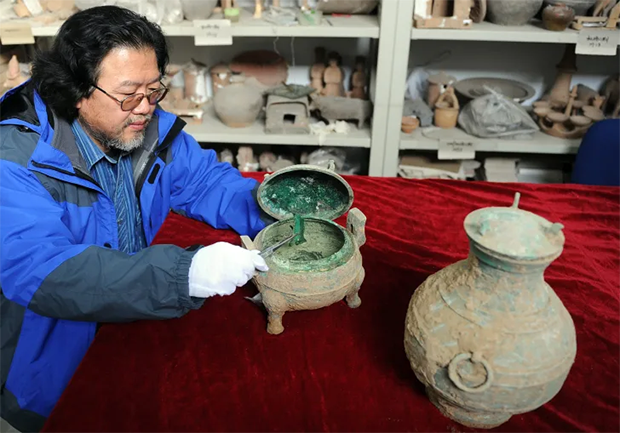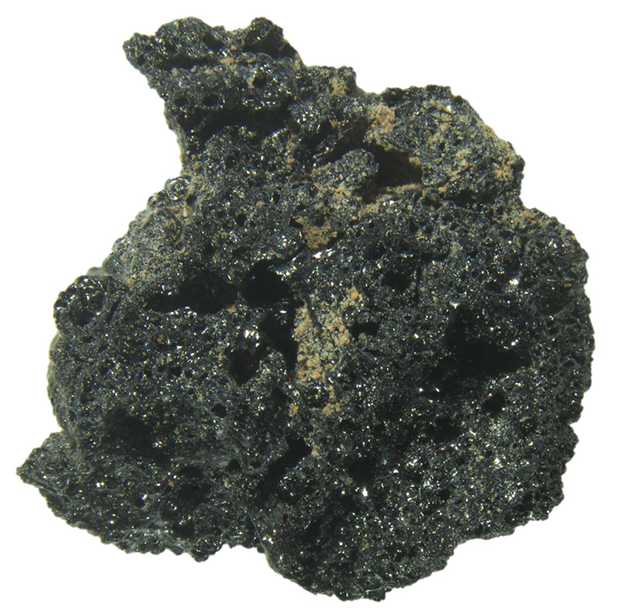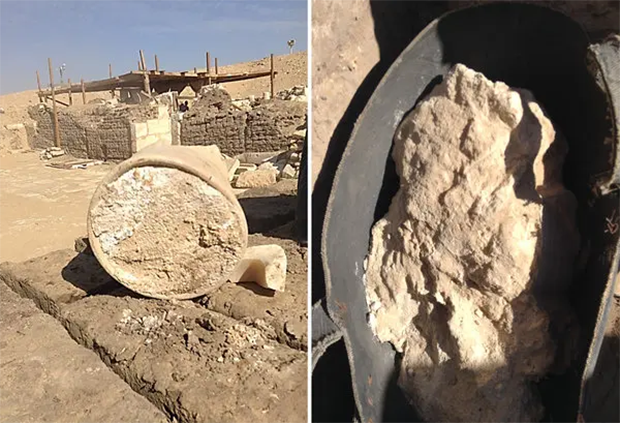|
In this day and age, the diverse array of products on supermarket
shelves is often taken for granted. The Founding Fathers never got to
enjoy sliced bread (introduced in 1928), nor peanut butter (invented in
its modern form in the late 19th century). Eel pie and roast beaver
tail, on the other hand, were often consumed by early American
colonists.
Travel back even further in time and it becomes difficult to imagine
what the ancient Romans and Egyptians may have eaten. But archaeological
findings have given us some idea of what was served for dinner hundreds
and even thousands of years ago—and perhaps surprisingly, some of the
foods aren't all that different from what we eat today. Here are a few
of the oldest once-edible items ever discovered.
|
|
Antarctic Fruitcake
Fruitcake may be a holiday staple, but you’d be hard-pressed to
find anyone who actually enjoys eating this nutty, fruity confection.
British explorer Robert Falcon Scott was apparently an exception. An
almost-edible fruitcake, believed to have been abandoned by Scott during
the British Antarctic Expedition of 1910 to 1913, was rediscovered on
the frigid continent over 100 years later. Back then, fruitcake was a
popular food in England, and the cold climes may have led to an extra
appreciation for its high fat and sugar content. Sadly, Scott never got
the chance to savor the sweet treat. He died of starvation and exposure
while attempting to become the first person to reach the South Pole in
1912. As for the century-old cake, it was in “excellent condition”
inside a corroded tin when it was found by the Antarctic Heritage Trust
in 2017 during an excavation of the historic Cape Adare hut that Scott
once used for shelter. |
 |
|
Chinese Bone Soup
Venture just beyond the ancient Chinese city of Xian—home to the
Terracotta Warriors—and you’ll arrive at another sacred destination (for
foodies, at least). A bronze cooking vessel containing a once-steaming
helping of bone broth was found in a tomb near the former Chinese
capital of Xian in 2010. Construction workers had been excavating the
site as part of a local airport’s expansion project, and naturally, they
were surprised when they found 2400-year-old soup underground. The
vessel still contained bones, and the finding was lauded by researchers
as “the first discovery of bone soup in Chinese archaeological history.”
The tomb likely belonged to a low-ranking military officer or member of
China’s land-owning class, according to archaeologists. |

|
|
Chocolate
Nine 103-year-old chocolate bars have been discovered in a tin that
belonged to a World War One hero. It was found among a collection of
items belonging to Leicestershire Regiment soldier Richard Bullimore.
Troops serving in France during the first Christmas of the war were
given the Colonies Gift Tins, made in Mansfield, Nottinghamshire. |

|
|
Bread
When an archaeologist working on an excavation site in Jordan first
swept up the tiny black particles scattered around an ancient fireplace,
she had no idea they were going to change the history of food and
agriculture. Amaia Arranz-Otaegui is an archaeobotanist from the
University of Copenhagen. She was collecting dinner leftovers of the
Natufians, a hunter-gatherer tribe that lived in the area more than
14,000 years ago during the Epipaleolithic time — a period between the
Paleolithic and Neolithic eras. Natufians were hunters, which one could
clearly tell from the bones of gazelles, sheep and hares that littered
the cooking pit. But it turns out the Natufians were bakers, too --at a
time well before scientists thought it was possible. |
 |
|
Egyptian Tomb Cheese
The pharaohs may not curse you for consuming ancient cheese found in the
tomb of Ptahmes during a 2013-14 excavation, but you’d probably wind up
with a nasty case of brucellosis—an infectious disease caused by eating
unpasteurized dairy products. Strains of the bacteria were found on the
cheese residue, which dates back some 3200 years and is the first known
example of cheese in ancient Egypt. It’s thought to contain sheep and
goat milk, but the taste would likely leave a lot to be desired.
Professor Paul Kindstedt, who is something of an expert on the history
of cheese, told The New York Times that this particular product would
probably taste “really, really acidy.”
|
 |